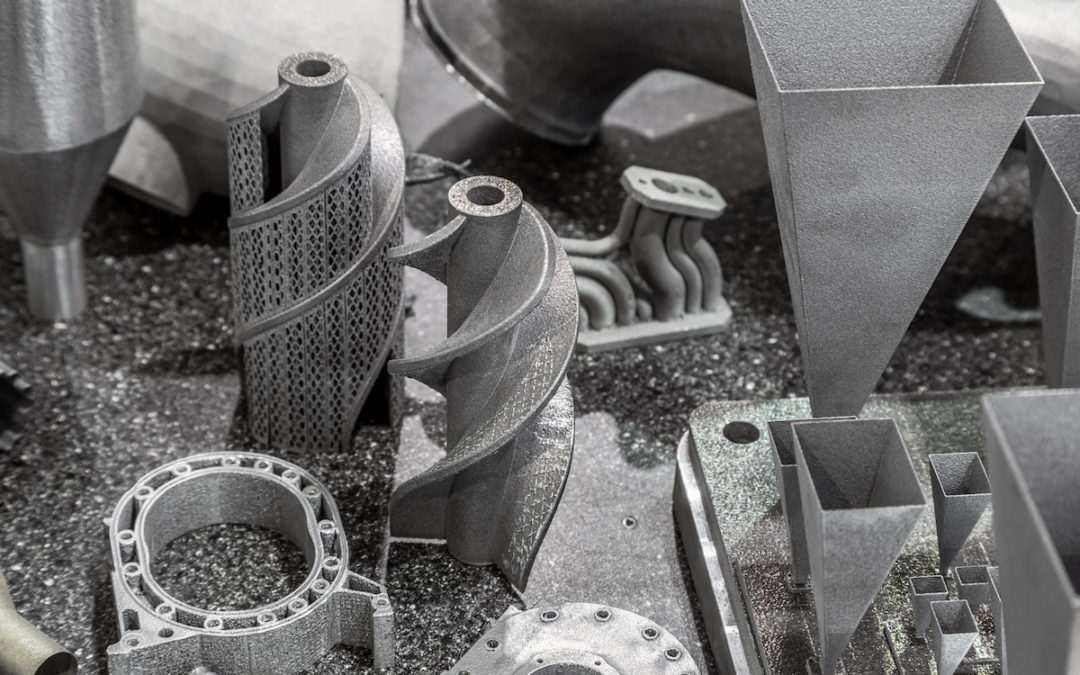Additive manufacturing (AM) has been steadily gaining traction as a viable option for producing metal parts. While previously limited to prototype development due to high cost per piece, additive manufacturing techniques have worked their way up to the production floor and engineers are pushing the boundaries of what they can do. AM offers several advantages over traditional manufacturing methods, such as the ability to produce parts with complex geometries and internal features, reduced material waste, and lower tooling costs. However, additive manufacturing also presents some unique challenges when manufacturing parts to ensure their quality and performance.
Surface finish
One challenge is the surface finish of additively manufactured (AM) parts. Unlike traditional machined, stamped, or extruded parts, 3D printed metal parts often have a rougher surface finish due to the nature of the build process.
With AM, the surface finish is largely determined by the build parameters used during manufacture. As such, it can be difficult to achieve a consistent surface finish across all parts. In addition, the build process can introduce defects into the surface of the part, such as pores or voids. These defects can degrade the surface finish and cause problems during assembly or use.
It is important to understand the effect that surface finish has on the mechanical properties of the part. For many applications, a smooth, high-quality surface finish is critical to the performance of the part and may require excess stock built into the part with the expectation that finish grinding processes will remove it. In other applications, a rougher surface finish may be acceptable.
Minimum stock to grind
One of the key considerations when grinding a 3D printed part is the minimum stock that can be ground without affecting the part’s final dimensions. In traditional manufacturing, components are typically produced with some excess material, allowing grinding to remove a small amount of material from the surface of the part without affecting the overall dimensions. However, with AM parts, it is vital to take into account the minimum stock that can be removed when determining the build tolerances and dimensions.
The minimum stock that can be removed during grinding will depend on the material, the geometry of the part, the specific AM process, and the desired surface finish. The printed part must account for shrinkage as well as grinding operations. In general, it is best to err on the side of caution and allow for more material to be removed during grinding than what is strictly necessary. This will prevent the need for multiple grinding operations and will reduce the risk of affecting the final dimensions of the part.
Material properties
Another important consideration when finish grinding AM parts is the material. In traditional manufacturing, the choice of material is typically dictated by the application or the desired properties of the part as well as the specific manufacturing method.
With AM, the build process often dictates the material selection. Parts built using the powder bed fusion (PBF) method use powdered metal, such as stainless steel, titanium, and aluminum. In PBF, the grain size of the metal powder will affect the surface finish. Other AM processes, such as directed energy deposition (DED), do not rely on powdered materials but will still exhibit evidence of layering. The choice of material can significantly impact the surface finish achievable through grinding.
Internal structure, stresses, and porosity
Another factor to consider is the part’s internal structure and stresses. In traditional manufacturing, the tensions in a part are typically relieved during the machining or stamping process. However, with AM parts, the build process can introduce stresses that must be corrected before grinding to avoid unwanted deformation.
For example, parts that are built using powder bed fusion (PBF) processes are typically made from metal powders deposited in layers. As the layers are deposited they cool and contract, causing stresses to build up that can lead to distortion or warping.
Another factor to consider when finish grinding AM parts is porosity. Porosity is the presence of voids or pores in the material. These voids can be introduced during the build process and can affect the surface finish achievable through grinding. In addition, porosity can also affect the strength and durability of the part.
Engineering production-ready AM parts
Finish grinding is a critical step in the additive manufacturing (AM) process and can significantly impact the part’s final properties. When designing AM parts, it is essential to consider the build tolerances, material selection, internal stresses, and post-processing steps. Doing so can ensure that the final part accurately meets the desired specifications and fulfills its role in your application.
Duval Precision Grinding offers high-quality precision grinding services, including ID/OD grinding, surface grinding, superfinishing alternatives, and more. Our experienced engineers are always available to engage early in the development cycle. Contact us today to learn more about our precision grinding services and ensure your 3D printed components are produced with the post-processing requirements for your application in mind.

